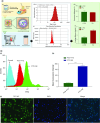Enhanced oral bioavailability of levormeloxifene and raloxifene by nanoemulsion: simultaneous bioanalysis using liquid chromatography-tandem mass spectrometry
- PMID: 38639565
- PMCID: PMC11225398
- DOI: 10.2217/nnm-2024-0023
Enhanced oral bioavailability of levormeloxifene and raloxifene by nanoemulsion: simultaneous bioanalysis using liquid chromatography-tandem mass spectrometry
Abstract
Aim & objective: Levormeloxifene (L-ORM) and raloxifene (RAL) are selective estrogen receptor modulators used in the treatment of postmenopausal osteoporosis and breast cancer. Here, we developed and validated a liquid chromatography-tandem mass spectrometry (LC-MS/MS) method for the simultaneous estimation of both drugs. Materials & methods: A quality-by-design (QbD) approach was used for the optimization of the nanoemulsion, and US FDA guidelines were followed for method validation. Results: Multiple reaction monitoring transitions were used for L-ORM (459.05→98.50), RAL (475.00→112.02) and internal standard (180.10→110.2). Analytes were resolved in a C18 column with 80:20 v/v% acetonitrile (ACN), 0.1% formic acid in triple-distilled water as a mobile phase. The developed method was linear over a concentration range of 1-600 ng/ml. Pharmacokinetic results of free L-ORM-RAL and the L-ORM-RAL nanoemulsion showed Cmax of free L-ORM - 70.65 ± 16.64, free RAL 13.53 ± 2.72, L-ORM nanoemulsion 65.07 ± 14.0 and RAL-nanoemulsion 59.27 ± 17.44 ng/ml. Conclusion: Future findings will contribute to the treatment of postmenopausal osteoporosis and breast cancer using L-ORM and RAL.
Keywords: LC–MS/MS; bioanalytical method validation; co-estimation; levormeloxifene and raloxifene; pharmacokinetics; postmenopausal osteoporosis.
Plain language summary
[Box: see text].
Conflict of interest statement
The authors have no competing interests or relevant affiliations with any organization or entity with the subject matter or materials discussed in the manuscript. This includes employment, consultancies, honoraria, stock ownership or options, expert testimony, grants or patents received or pending, or royalties.
Figures



References
-
- Anthamatten A, Parish A. Clinical update on osteoporosis. J. Midwifery Womens Health 64(3), 265–275 (2019). - PubMed
-
- Mulder JE, Kolatkar NS, LeBoff MS. Drug insight: existing and emerging therapies for osteoporosis. Nat. Clin. Pract. Endocrinol. Metab. 2(12), 670–680 (2006). - PubMed
-
- Epstein S. Update of current therapeutic options for the treatment of postmenopausal osteoporosis. Clin. Ther. 28(2) 151–173 (2006). - PubMed
-
•• Describes advanced options for the treatment of postmenopausal osteoporosis.
-
- Goldstein SR, Nanavati N. Adverse events that are associated with the selective estrogen receptor modulator levormeloxifene in an aborted phase III osteoporosis treatment study. Am. J. Obstet. Gynecol. 187(3), 521–527 (2002). - PubMed
Publication types
MeSH terms
Substances
LinkOut - more resources
Full Text Sources
Other Literature Sources
